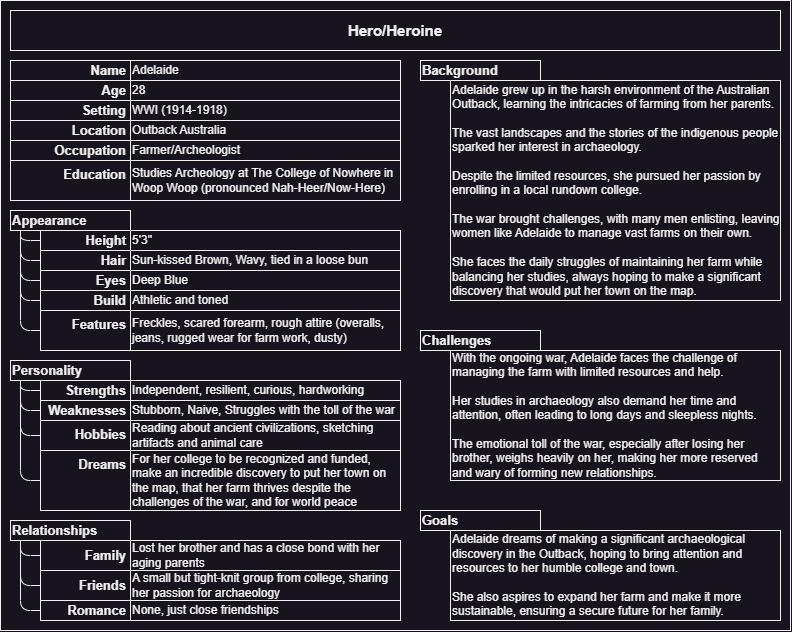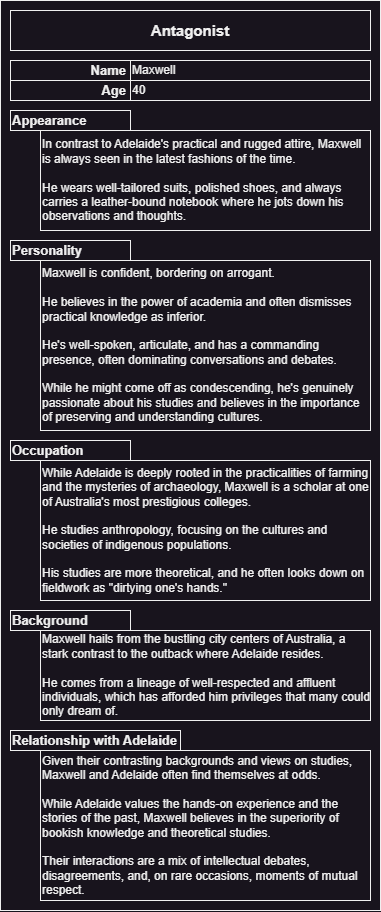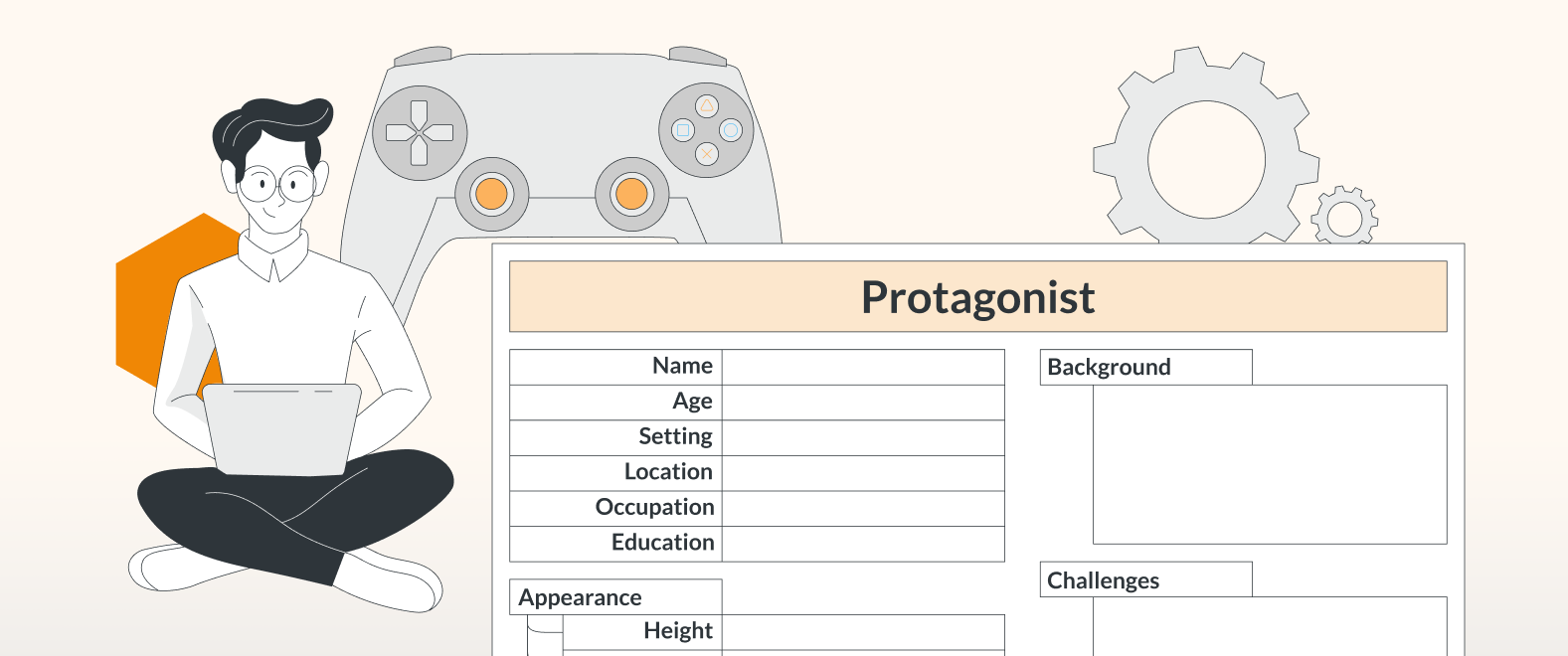In his last blogpost, Andy took us through the initial stage of gathering rough ideas, and starting to organize these into a comprehensive brainstorm.
In the second blogpost of the series, he will show us character creation and development; giving your player character and ancillary/secondary characters background and context, to bring them to life.
Introduction
In the universe of game development, characters are the heartbeat, the anchors that tether players to our fantastical realms.
My focus will be my main character Adelaide. This being a short game I want to make sure the main character has had more time spent being defined with background, traits, quirks. Players will be spending most of their time immersed with her in the game.
Other characters will have enough detail to bolster our heroine and have their own personalities.
Chaos in Character Creation
In exploring this chaotic phase, where rough sketches, quirky traits, and unique backstories emerge. I try to keep track of this whirlwind of creativity, I will turn to my trusty companion, draw.io, and utilize this tool to help me store, organize, and breathe life into these initial character ideas.
Chaotic Character Creation is a whirlwind ride of ideas of its own, with its own sketches and concepts. They will be characters ready for their adventures.

Rough word cloud for the player character, the villain and ancillary/secondary characters
Character Refinement
When the brainstorming storm subsides, I am left with a room (or brain) full of scribbles. Refining these rough diamonds will shape more of the story and game and how it all plays out as an experience of adventure for the player.
For the character crafting journey, draw.io has been invaluable, turning abstract ideas into clear character maps, and personas, seeing the connected relationships and where they will take the story.

Character details for the main player character

Character details of the villain

Lastly the ancillary/secondary characters that support either villain or player character (our heroine)
You may have noticed reader that the details diminish for each character after our main heroine. That was by choice: at the end of the day the relationships and connections all serve a purpose to drive the story forward, and if you decide that it is your villain or even a minor character that will have more details, if it helps to convey an immersive and compelling story, then great! (and if you do, let me know! I would love to read it/experience it!)
Andy Outro
We have our initial story concept, and we have begun developing the characters. In the next blogpost, we’ll start weaving the threads together, to refine the story plot, and working within a Mechanics, Dynamics, and Aesthetics (MDA) framework to start to map out what the characters will do in the game.
draw.io Outro
To follow along with the rest of Andy’s storytelling in game design series, see:
- From Chaos to Clarity: Conceptualizing Your Short Game
- Crafting Memorable Characters: From Chaos to Clarity
- Refining Story Plots and Mechanics for Your Short Game
- Game Design’s Chaos Compass: draw.io
Last Updated on February 27, 2024 by Admin

